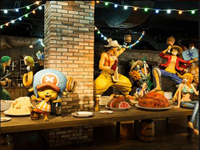Japan's four distinct seasons bring with it an array of traditional events and holidays, each embracing the unique charm of the changing times. Integral to this seasonal celebration is the culinary transition, where the Japanese philosophy of using fresh, seasonal ingredients takes center stage, creating an ever-evolving feast for the senses. Understanding these cyclical customs, from time-honored festivals to age-old culinary practices, can transform your visit into an immersive cultural journey. This feature will guide you through the customs and traditions that enliven Japan each January, offering a window into a heritage woven through centuries.
Important Days in January
January is also known as Mutsuki (睦月) in the Japanese lunar calendar, with the character “mu” signifying intimacy, friendliness, or harmony. This name is particularly fitting, as family members gather to welcome the New Year, celebrating in a spirit of unity and harmony.
・January 1: New Year's Day (Ganjitsu, 元旦)
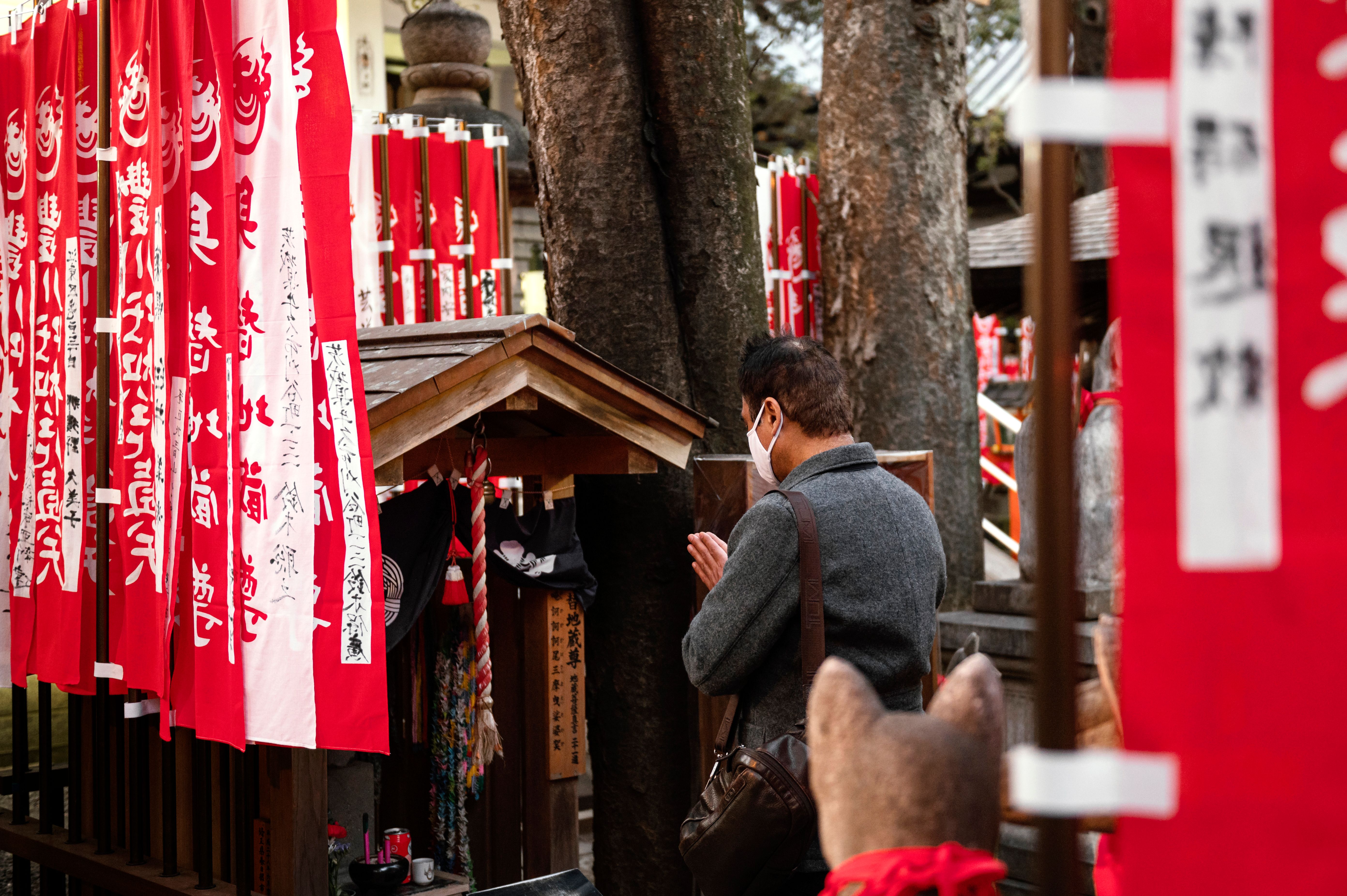 January 1st marks not only the start of the year but also the pinnacle of Japanese celebrations. It's a day steeped in tradition, where the Western New Year is embraced with unique Japanese customs. Families gather to witness the first sunrise, extending New Year greetings to loved ones, a symbol of renewal and togetherness. This auspicious day sees homes filled with joy, as families reunite, visit temples, and partake in the revered Joya-no-Kane ceremony at midnight.
January 1st marks not only the start of the year but also the pinnacle of Japanese celebrations. It's a day steeped in tradition, where the Western New Year is embraced with unique Japanese customs. Families gather to witness the first sunrise, extending New Year greetings to loved ones, a symbol of renewal and togetherness. This auspicious day sees homes filled with joy, as families reunite, visit temples, and partake in the revered Joya-no-Kane ceremony at midnight.
 A key element of these celebrations is the art of decoration. In Japan, households adorn their entrances with distinct decorations that encapsulate the essence of the New Year. Among these, the kadomatsu stands out - a pine decoration symbolizing longevity and steadfastness, traditionally placed at the entrance. This arrangement, often featuring three bamboo shoots signifying prosperity and pine branches for endurance, is believed to welcome ancestral spirits or kami of the harvest. Adorned with plum blossoms, the kadomatsu is a testament to the resilience and vitality of the Japanese spirit.
A key element of these celebrations is the art of decoration. In Japan, households adorn their entrances with distinct decorations that encapsulate the essence of the New Year. Among these, the kadomatsu stands out - a pine decoration symbolizing longevity and steadfastness, traditionally placed at the entrance. This arrangement, often featuring three bamboo shoots signifying prosperity and pine branches for endurance, is believed to welcome ancestral spirits or kami of the harvest. Adorned with plum blossoms, the kadomatsu is a testament to the resilience and vitality of the Japanese spirit.
・January 7: Seven Herb Rice Porridge (Nanakusagayu, 七草粥)
 Nanakusagayu, a restorative porridge combining rice with seven early-spring herbs, is a traditional Japanese dish known for its stomach-soothing properties. This delicate blend includes cudweed, radish, water dropwort, shepherd’s purse, turnip, chickweed, and nipplewort.
Nanakusagayu, a restorative porridge combining rice with seven early-spring herbs, is a traditional Japanese dish known for its stomach-soothing properties. This delicate blend includes cudweed, radish, water dropwort, shepherd’s purse, turnip, chickweed, and nipplewort.
 Originating in the Edo period, the custom of consuming Nanakusagayu on January 7th symbolizes warding off evil and promoting good health for the year. In modern times, convenience meets tradition, as supermarkets offer Nanakusagayu sets with these seven herbs pre-packaged, or even dried Nanakusagayu variants, making it effortless to prepare this wholesome meal at home.
Originating in the Edo period, the custom of consuming Nanakusagayu on January 7th symbolizes warding off evil and promoting good health for the year. In modern times, convenience meets tradition, as supermarkets offer Nanakusagayu sets with these seven herbs pre-packaged, or even dried Nanakusagayu variants, making it effortless to prepare this wholesome meal at home.
・Second Monday of January: Coming-of-Age Day (Seijin-no-hi, 成人の日)

Every year on the second Monday, Japan celebrates its young people stepping into adulthood with nationwide Coming-of-Age ceremonies. Since April 2022, the age of majority in Japan's civil law has been lowered from 20 to 18, officially recognizing 18-year-olds as adults. Despite this change, many localities continue to focus on those around 20 years old, mainly due to the challenges 18-year-olds face, such as college entrance exams or job hunting in January.
These ceremonies are a vibrant display of tradition, with participants often donning elegant kimono or formal suits, and women enhancing their attire with exquisite hair accessories. The event includes speeches by government officials, highlighting the new responsibilities and societal roles these young adults will assume. Celebrations with family and friends follow, marking this significant transition into adult life.
・January 1 - 15: Shichifukujin Meguri (七福神巡り), Visiting the Seven Gods of Fortune
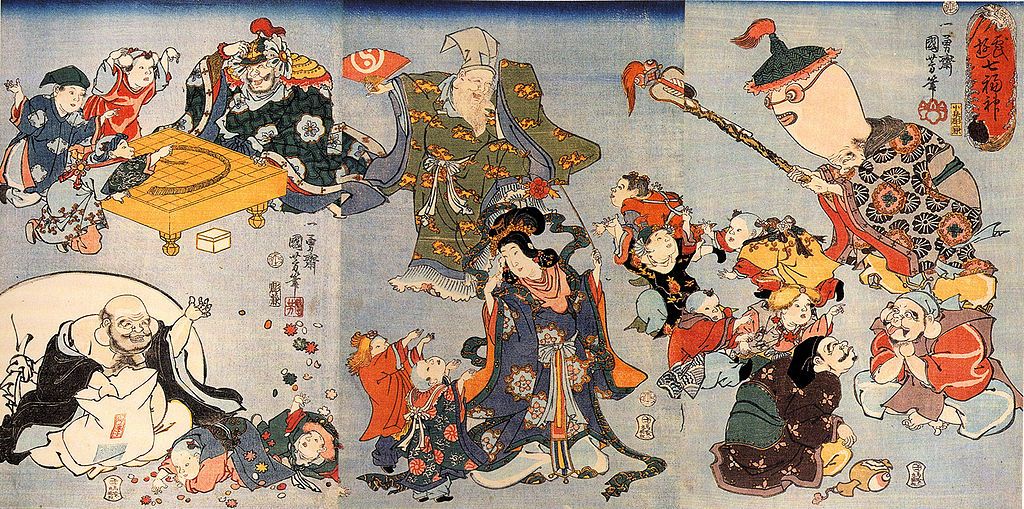 From January 1st to 15th, many Japanese visit shrines and temples to honor the Seven Gods of Fortune. This cherished tradition, which began in the Edo period, has become a cornerstone of New Year festivities in Japanese culture. It's an occasion where people seek the blessings of the seven deities, hoping for health, wealth, and peace. More than a religious ritual, this pilgrimage is a time for socializing and family gatherings.
From January 1st to 15th, many Japanese visit shrines and temples to honor the Seven Gods of Fortune. This cherished tradition, which began in the Edo period, has become a cornerstone of New Year festivities in Japanese culture. It's an occasion where people seek the blessings of the seven deities, hoping for health, wealth, and peace. More than a religious ritual, this pilgrimage is a time for socializing and family gatherings.
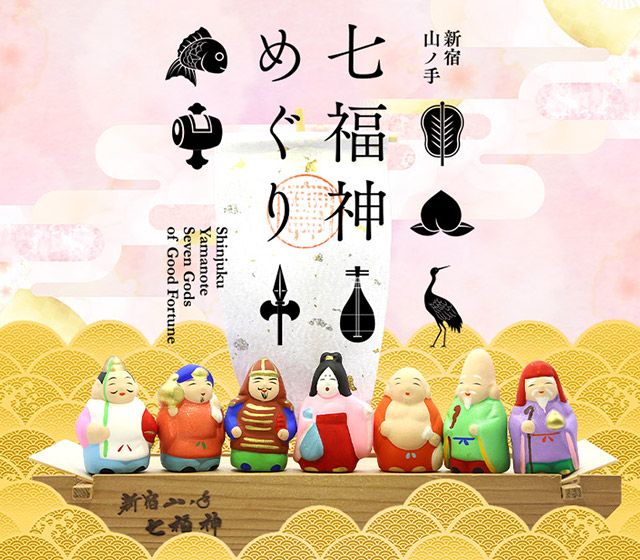 The Seven Gods of Fortune are:
The Seven Gods of Fortune are:
Ebisu: Symbolizing bountiful harvests and flourishing commerce; Daikokuten: Associated with wealth, prosperity, and the warding off of evil; Bishamonten: Known for bringing wealth, luck, and victory; Benzaiten: Revered for granting wealth, aiding marital unions, and enhancing skills; Hotei: Representing happiness, generosity, and familial harmony; Fukurokujyu: Bestowing good fortune and longevity; Jurōjin: Emblematic of long life.
The pilgrimage route can differ regionally, but typically involves visiting temples in a specific sequence. Devotees pray for their desired fortunes and often collect amulets linked to each deity, believed to carry the blessings and protection of these gods. These amulets are also popular gifts for visitors during this time.
For those in Tokyo, the Shinjuku Seven Lucky Gods Tour is a recommended route, which takes around 1 hour and 50 minutes. https://www.kanko-shinjuku.jp/course/-/article_2809.html
Seasonal Ingredients
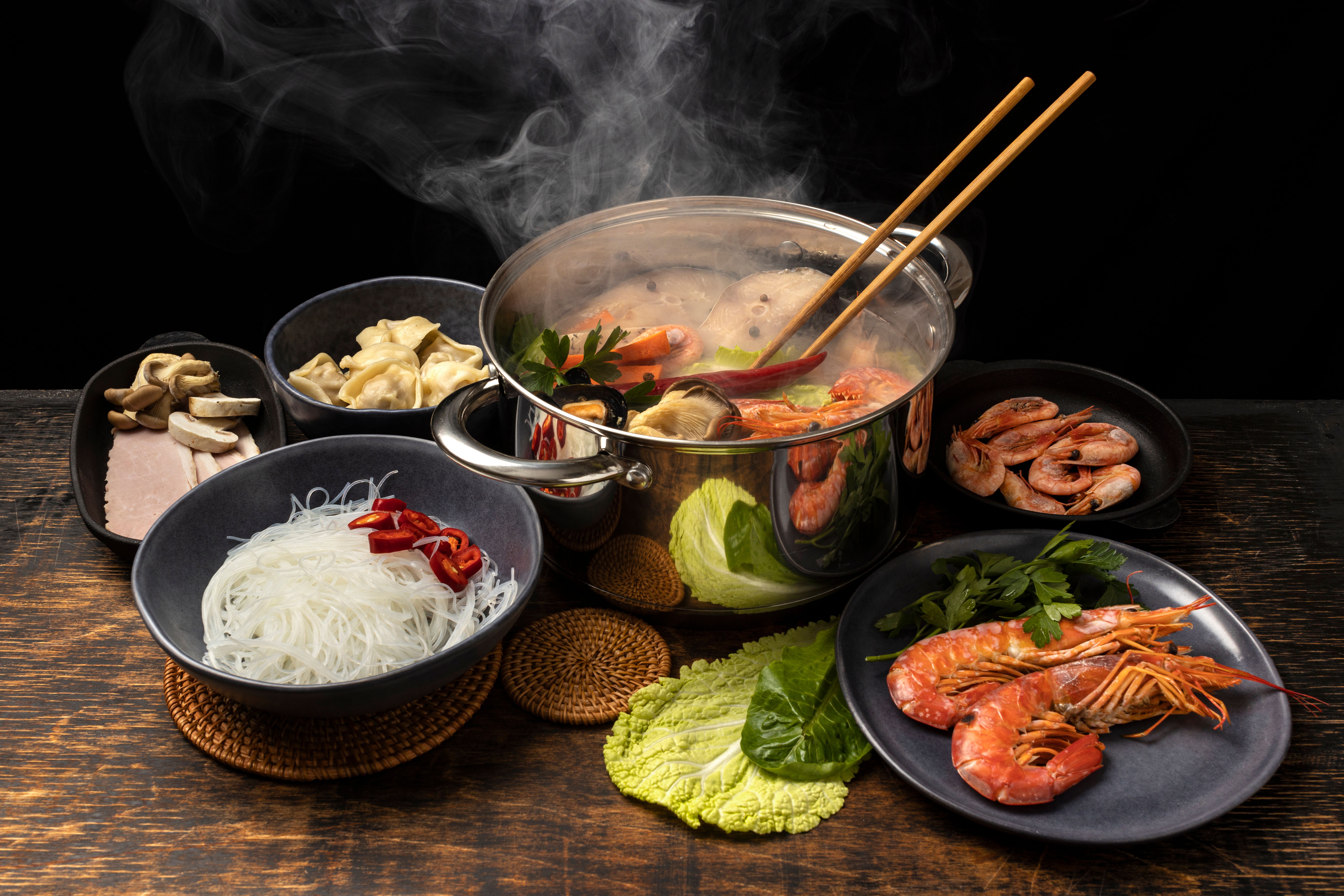 In January, Japan's winter palette features special ingredients that not only warm the body but also delight the palate. This month's culinary highlights include:
In January, Japan's winter palette features special ingredients that not only warm the body but also delight the palate. This month's culinary highlights include:
Amberjack (Buri): A winter staple, amberjack is at its peak in January. It's a versatile fish, often featured in savory dishes like teriyaki or warm soup.
Yuzu: This citrus fruit, akin to oranges but with a distinct aroma, is a winter favorite. Yuzu's unique fragrance enhances a variety of dishes and is a key ingredient in comforting yuzu tea, perfect for cold days.
Pufferfish (Fugu): A delicacy unique to Japanese winter cuisine, fugu is famed for its potential toxicity. Prepared by skilled chefs with specialized training, fugu transforms into a safe, exquisite dish that's a hallmark of Japanese culinary artistry.
Crab (Kani): January is prime time for crab, especially varieties like snow crab from Hokkaido. These offer a fresh, flavorful seafood experience that is quintessential to winter dining in Japan.
Garlic: Renowned for its health benefits, garlic is a winter essential. It's widely used in stews, stir-fries, and other hearty dishes, believed to help ward off the cold.
These ingredients, integral to the Japanese diet in January, showcase the cultural emphasis on seasonal eating.
Recommended Things to do in January
・Sapporo Snow Festival
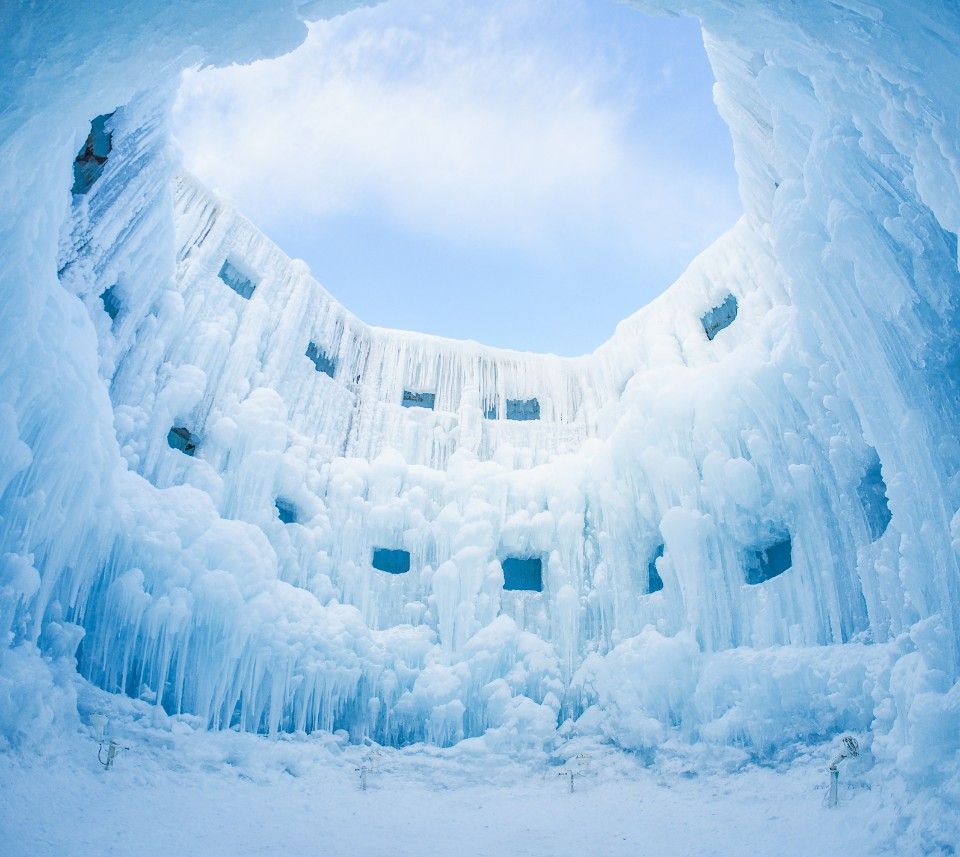 Hokkaido, a winter paradise, hosts the dazzling Sapporo Snow Festival. Odori Park transforms into a magical landscape with intricate snow and ice sculptures. As you wander through these artful creations, you're enveloped in a whimsical, snowy ambiance. The sculptures, spectacularly lit at night, offer a breathtaking view, making this festival not just a celebration but an artistic homage to northern Japan's winter beauty.
Hokkaido, a winter paradise, hosts the dazzling Sapporo Snow Festival. Odori Park transforms into a magical landscape with intricate snow and ice sculptures. As you wander through these artful creations, you're enveloped in a whimsical, snowy ambiance. The sculptures, spectacularly lit at night, offer a breathtaking view, making this festival not just a celebration but an artistic homage to northern Japan's winter beauty.
Check out our feature that provides schedules and other details for 2024: https://ikidane-nippon.com/en/features/20231227gx
・New Year Celebrations in Tokyo
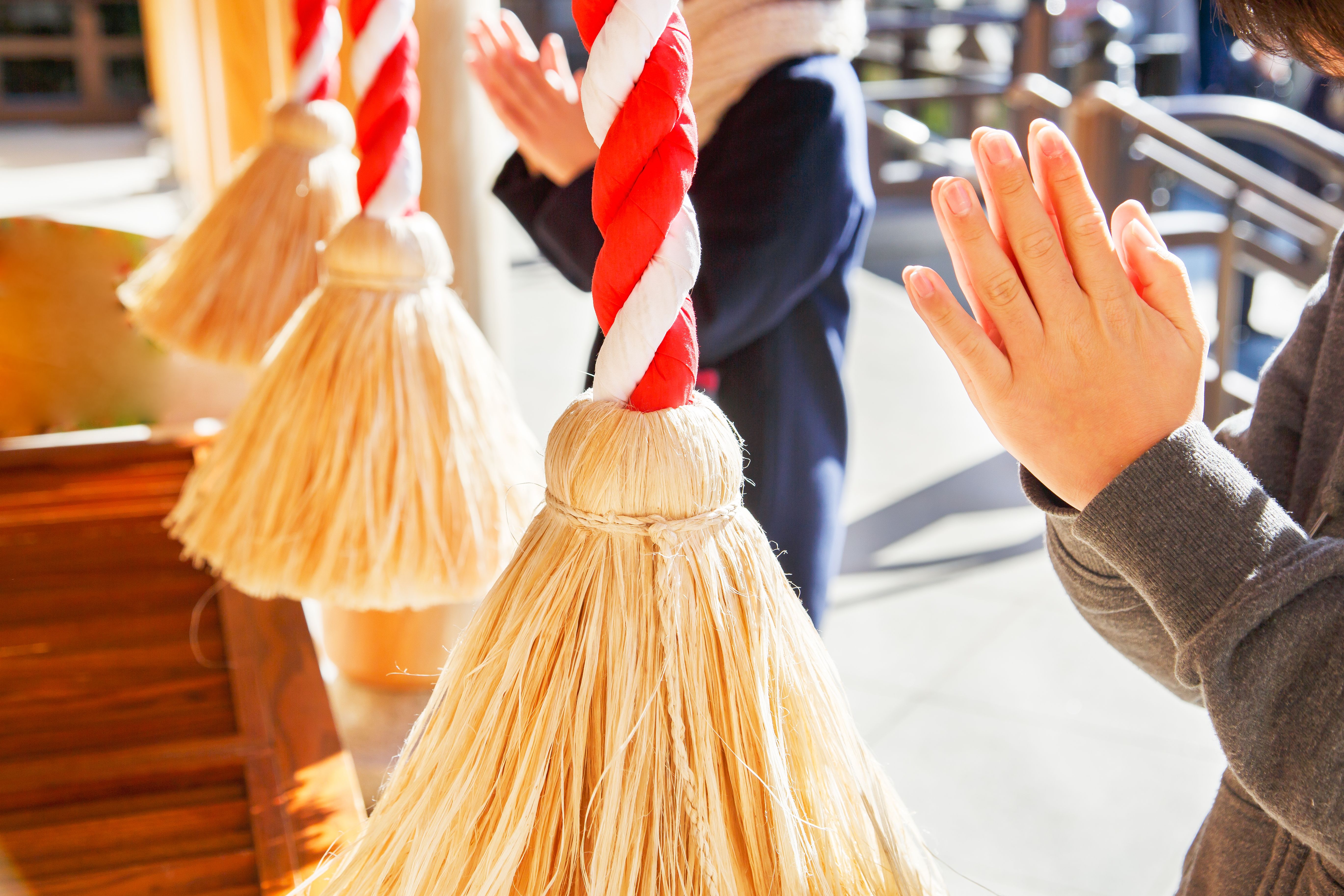 You can enjoy all of the traditions and customs associated with New Years right in Tokyo. Sensoji Temple, a focal point of these celebrations, draws crowds seeking to perform hatsumode, the first temple visit of the year. Here, amid a reverent atmosphere, people pray for health, happiness, and success. The temple's surroundings, steeped in tradition, transport visitors back in time, offering a glimpse into Japan's rich cultural heritage. Additionally, you can explore other New Year customs, including the exciting pursuit of fukubukuro (lucky bags).
You can enjoy all of the traditions and customs associated with New Years right in Tokyo. Sensoji Temple, a focal point of these celebrations, draws crowds seeking to perform hatsumode, the first temple visit of the year. Here, amid a reverent atmosphere, people pray for health, happiness, and success. The temple's surroundings, steeped in tradition, transport visitors back in time, offering a glimpse into Japan's rich cultural heritage. Additionally, you can explore other New Year customs, including the exciting pursuit of fukubukuro (lucky bags).
・Hakone Onsen
 For relaxation amidst natural splendor, Hakone's hot springs are unrivaled. Renowned for their therapeutic qualities, these onsen are perfect for unwinding while enjoying stunning outdoor vistas. Imagine soaking in warm, soothing waters with views of Mount Fuji and the serenity of nature around you. A cable car ride to Mount Komagatake, Hakone's highest point, offers panoramic views of Mount Fuji and Lake Ashi. Witnessing the first sunrise over Mount Fuji is considered auspicious, believed to bring good fortune for the year ahead.
For relaxation amidst natural splendor, Hakone's hot springs are unrivaled. Renowned for their therapeutic qualities, these onsen are perfect for unwinding while enjoying stunning outdoor vistas. Imagine soaking in warm, soothing waters with views of Mount Fuji and the serenity of nature around you. A cable car ride to Mount Komagatake, Hakone's highest point, offers panoramic views of Mount Fuji and Lake Ashi. Witnessing the first sunrise over Mount Fuji is considered auspicious, believed to bring good fortune for the year ahead.
・Komagatake Ropeway : https://www.hakone.or.jp/5336
Japan in January offers an eclectic mix of experiences, each distinctively reflecting the country's rich cultural tapestry and natural splendor. For those planning a trip to Japan during this time, diving into this introduction is a great start! Understanding the local customs and seasonal highlights can significantly enhance your travel experience.
Knowing what special events are taking place, the cultural significance behind them, and the seasonal delicacies to savor can transform a simple trip into a rich, immersive journey. Japan in January is not just a destination; it's an invitation to explore a world where ancient traditions and modern marvels coexist in harmony.
Download the Ikidane Nippon App: iOS / Android
Let us know if there is something that needs to be fixed: Feedback Form






